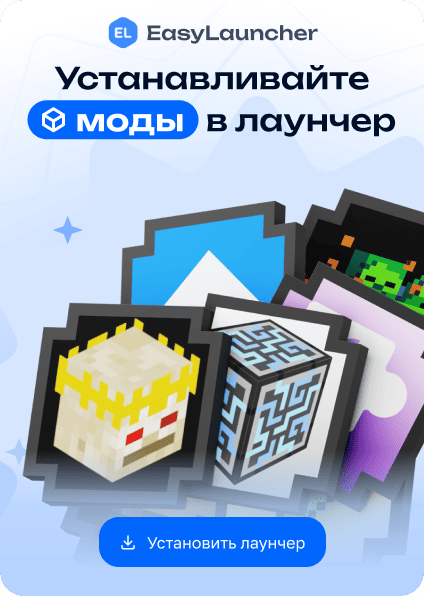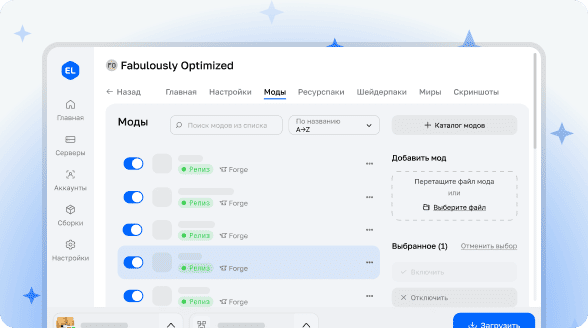
RecipeBuilder
This modification provides a convenient toolset for creating JSON recipes and tags through an interactive interface.
Recipe Creation

The recipe generator allows automatic formation of JSON files. The process consists of the following steps:
- Select the required type from the list on the left (filtering is available through the dropdown menu above the list)
- Place items and liquids in the corresponding slots of the central panel. Some slots may be optional depending on the recipe type
- If necessary, set recipe unlocking conditions
- Configure additional parameters such as furnace smelting time or experience amount
- Optionally set a unique recipe name to prevent conflicts (by default, the internal name of the result is used)
- Click the create button to export the recipe and related advancement in JSON format
Certain slots support editing, for example, to use tags instead of specific items or liquids.
Tag Generator

The tool for creating JSON tags works as follows:
- Enter the tag name
- Select the tag type from available options
- If necessary, check the option to replace contents of existing tags (recommended for advanced users)
- Add elements through the "Element name" field or by dragging items followed by clicking the "Add element" button
- Export the result to JSON by clicking the corresponding button
Element types and ways to specify them:
- Items: Any item
- Blocks: Any block
- Liquids: Containers with a single liquid (buckets and analogues)
- Entity types: Spawn eggs (except for entities that cannot be spawned via eggs)
- Block entity types: Temporarily unavailable
- Effects: Potions with one effect
- Enchantments: Enchanted books with one enchantment
Location of Exported Files
By default, recipes and advancements are saved in the folder of the output item/liquid domain, while tags are saved in the recipebuilder domain. To change the path, specify the full name in the format "domain:name". Subfolder creation is also supported through the format "subfolder/name".
Generated JSON files are placed in a functional datapack inside the recipebuilder folder of the Minecraft root directory. In singleplayer, the datapack is automatically copied to the world folder, and new recipes/tags are activated with the /reload command.
Planned Improvements
- Full liquid support in all functions
- Visual indicators for mandatory and optional slots
- Tooltips for editable cells


